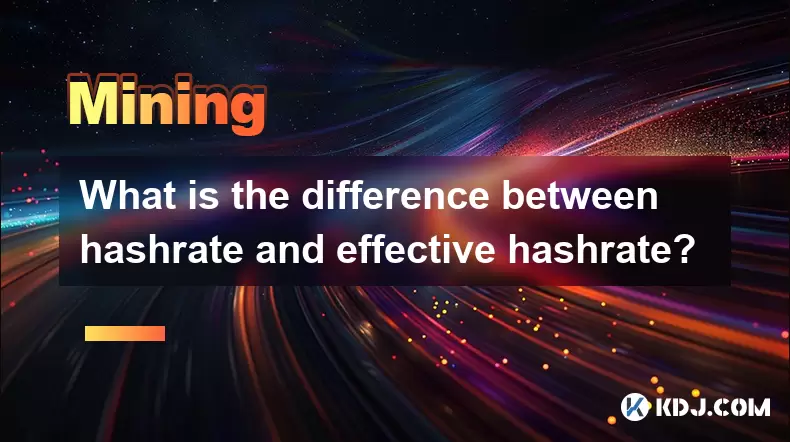-
 Bitcoin
Bitcoin $119,161.9671
1.52% -
 Ethereum
Ethereum $2,995.0722
2.34% -
 XRP
XRP $2.8555
5.32% -
 Tether USDt
Tether USDt $1.0002
0.00% -
 BNB
BNB $692.9308
1.48% -
 Solana
Solana $162.9611
1.87% -
 USDC
USDC $0.9999
0.00% -
 Dogecoin
Dogecoin $0.2014
2.84% -
 TRON
TRON $0.3032
0.90% -
 Cardano
Cardano $0.7464
6.51% -
 Hyperliquid
Hyperliquid $49.1533
5.71% -
 Stellar
Stellar $0.4773
24.77% -
 Sui
Sui $3.4979
3.93% -
 Chainlink
Chainlink $15.8552
6.01% -
 Hedera
Hedera $0.2401
23.85% -
 Bitcoin Cash
Bitcoin Cash $510.0474
0.97% -
 Avalanche
Avalanche $21.5550
4.82% -
 UNUS SED LEO
UNUS SED LEO $9.0389
-0.47% -
 Shiba Inu
Shiba Inu $0.0...01340
2.27% -
 Toncoin
Toncoin $2.9910
0.62% -
 Litecoin
Litecoin $96.4406
4.34% -
 Polkadot
Polkadot $4.0359
4.59% -
 Monero
Monero $338.4759
2.80% -
 Uniswap
Uniswap $8.6460
4.01% -
 Dai
Dai $0.9999
0.00% -
 Ethena USDe
Ethena USDe $1.0007
0.03% -
 Pepe
Pepe $0.0...01254
3.26% -
 Bitget Token
Bitget Token $4.3969
0.79% -
 Aave
Aave $312.2641
3.98% -
 Bittensor
Bittensor $397.0731
4.17%
What is the difference between hashrate and effective hashrate?
Hashrate measures a blockchain network's computational power, while effective hashrate reflects real-world mining performance after accounting for stability, latency, and efficiency factors.
Jul 13, 2025 at 11:08 pm

Understanding the Concept of Hashrate
Hashrate refers to the computing power used by a blockchain network to process and validate transactions. It is measured in hashes per second (H/s), and larger units like kilohashes (KH/s), megahashes (MH/s), gigahashes (GH/s), terahashes (TH/s), or even petahashes (PH/s) are commonly used for modern networks. In proof-of-work blockchains like Bitcoin or Ethereum (prior to The Merge), miners compete to solve cryptographic puzzles using hashing algorithms. The higher the hashrate of the network, the more secure it becomes against attacks.
When individuals mine on their own or join mining pools, they contribute their computational resources to the network. Each miner’s individual hashrate indicates how many calculations their hardware can perform every second. This metric helps determine potential earnings and efficiency when participating in mining operations.
Hashrate is a direct measure of the raw processing power being applied to a blockchain network.
Defining Effective Hashrate
Effective hashrate, on the other hand, represents a more realistic view of mining performance over time. While actual hashrate measures instantaneous computing power, effective hashrate takes into account network latency, hardware stability, pool difficulty adjustments, and uptime. It reflects how much work a miner contributes effectively to the mining pool or network.
For example, if a miner claims a hashrate of 100 MH/s but frequently experiences connection issues or hardware instability, their effective hashrate may only be around 85 MH/s due to inconsistent submission of valid shares. Mining pools often use this metric to calculate rewards, as it provides a fairer way to assess contributions over time.
Effective hashrate adjusts for real-world conditions that impact mining performance beyond theoretical maximums.
How Are They Measured?
- Hashrate Measurement: Miners can check their hashrate through mining software interfaces such as CGMiner, BFGMiner, or NiceHash Miner. These tools display the current speed at which their hardware is performing hashing operations.
- Effective Hashrate Calculation: Mining pools calculate effective hashrate based on accepted shares, rejected shares, and the time intervals during which the miner was actively contributing. Some pools average this over 24 hours or longer to smooth out fluctuations.
Mining dashboards provided by pools like F2Pool, Poolin, or Slush Pool typically show both metrics separately. Users can compare them to identify performance bottlenecks or connectivity problems.
Monitoring both metrics allows miners to optimize hardware and network configurations for better profitability.
Why Does the Difference Matter?
Understanding the difference between hashrate and effective hashrate is crucial for miners aiming to maximize returns. A high hashrate with low effective hashrate suggests inefficiencies in mining setup. These inefficiencies could stem from:
- Poor internet connectivity
- Outdated mining software
- Hardware overheating or throttling
- Incorrect configuration settings
By identifying these issues, miners can improve their effective hashrate and thus increase their share of mining rewards. Additionally, mining pool administrators rely on effective hashrate to fairly distribute block rewards among participants.
A discrepancy between hashrate and effective hashrate signals room for optimization in mining operations.
How to Improve Effective Hashrate
Improving effective hashrate involves addressing factors that reduce its value relative to raw hashrate. Here are some practical steps:
- Ensure stable and fast internet connection
- Use reliable mining software compatible with your hardware
- Keep GPU or ASIC firmware updated
- Monitor hardware temperatures and cooling systems
- Choose mining pools with low latency
- Optimize power settings to prevent throttling
Each of these steps contributes to maintaining a high effective hashrate. For instance, reducing network ping to a mining pool can significantly cut down on share rejection rates, thereby increasing effective hashrate.
Optimizing hardware and network settings directly boosts effective hashrate and overall mining efficiency.
Frequently Asked Questions
Q: Can effective hashrate ever exceed actual hashrate?
A: No, effective hashrate cannot exceed actual hashrate. It always reflects a portion of the total hashrate after accounting for losses due to network, hardware, or configuration issues.
Q: Do all mining pools calculate effective hashrate the same way?
A: Different pools may use varying methods to calculate effective hashrate, including different averaging periods or share acceptance thresholds. Always check the specific pool's documentation for details.
Q: Is effective hashrate important for solo mining?
A: Yes, even in solo mining, effective hashrate matters because it determines how consistently you submit valid solutions to the network. However, since there are no shared rewards, the focus shifts more toward solving blocks independently.
Q: How often should I monitor my effective hashrate?
A: It’s advisable to monitor effective hashrate daily or weekly, especially when troubleshooting performance or experimenting with new mining configurations.
Disclaimer:info@kdj.com
The information provided is not trading advice. kdj.com does not assume any responsibility for any investments made based on the information provided in this article. Cryptocurrencies are highly volatile and it is highly recommended that you invest with caution after thorough research!
If you believe that the content used on this website infringes your copyright, please contact us immediately (info@kdj.com) and we will delete it promptly.
- BlockDAG's BEAT Vesting Pass: Dominating Crypto While HBAR Shows Strength
- 2025-07-14 04:30:12
- Crypto's Underdogs: Stellar (XLM), Dogecoin (DOGE), and the Hunt for the Next Big Thing
- 2025-07-14 04:50:12
- RUVI Token: AI Auditing and Low Price Position It for 100x Gains
- 2025-07-14 04:50:12
- Efinity's Epic Surge: Altcoin Daily Gains and What It Means for You
- 2025-07-14 04:35:12
- Bitcoin Price Surges Amid Crypto Week and Global Market Shifts
- 2025-07-14 05:10:11
- BlockDAG, BONK, XRP: What's Hot and What's Not in the Crypto World
- 2025-07-14 03:30:16
Related knowledge

How are crypto mining profits taxed?
Jul 14,2025 at 12:28am
Understanding Cryptocurrency Mining and TaxationCryptocurrency mining involves validating transactions on a blockchain network and earning rewards in ...

How to keep a mining rig cool
Jul 12,2025 at 01:42pm
Understanding the Importance of Cooling in Mining RigsCryptocurrency mining is an intensive process that places heavy demand on hardware components, p...

How much does it cost to start crypto mining?
Jul 13,2025 at 12:22am
Understanding the Basic Costs of Crypto MiningStarting crypto mining involves several upfront and ongoing expenses. The primary costs include hardware...

What is the most profitable crypto to mine?
Jul 13,2025 at 07:00am
Understanding Mining Profitability in CryptocurrencyWhen evaluating the most profitable crypto to mine, it's essential to consider several factors tha...

What do I need to start mining crypto?
Jul 13,2025 at 12:28am
Understanding the Basics of Crypto MiningCrypto mining is the process by which transactions are verified and added to a blockchain, and new coins are ...

How does crypto mining work?
Jul 13,2025 at 11:01am
Understanding the Basics of Crypto MiningCrypto mining is the process through which new cryptocurrency coins are introduced into circulation and trans...

How are crypto mining profits taxed?
Jul 14,2025 at 12:28am
Understanding Cryptocurrency Mining and TaxationCryptocurrency mining involves validating transactions on a blockchain network and earning rewards in ...

How to keep a mining rig cool
Jul 12,2025 at 01:42pm
Understanding the Importance of Cooling in Mining RigsCryptocurrency mining is an intensive process that places heavy demand on hardware components, p...

How much does it cost to start crypto mining?
Jul 13,2025 at 12:22am
Understanding the Basic Costs of Crypto MiningStarting crypto mining involves several upfront and ongoing expenses. The primary costs include hardware...

What is the most profitable crypto to mine?
Jul 13,2025 at 07:00am
Understanding Mining Profitability in CryptocurrencyWhen evaluating the most profitable crypto to mine, it's essential to consider several factors tha...

What do I need to start mining crypto?
Jul 13,2025 at 12:28am
Understanding the Basics of Crypto MiningCrypto mining is the process by which transactions are verified and added to a blockchain, and new coins are ...

How does crypto mining work?
Jul 13,2025 at 11:01am
Understanding the Basics of Crypto MiningCrypto mining is the process through which new cryptocurrency coins are introduced into circulation and trans...
See all articles
























































































